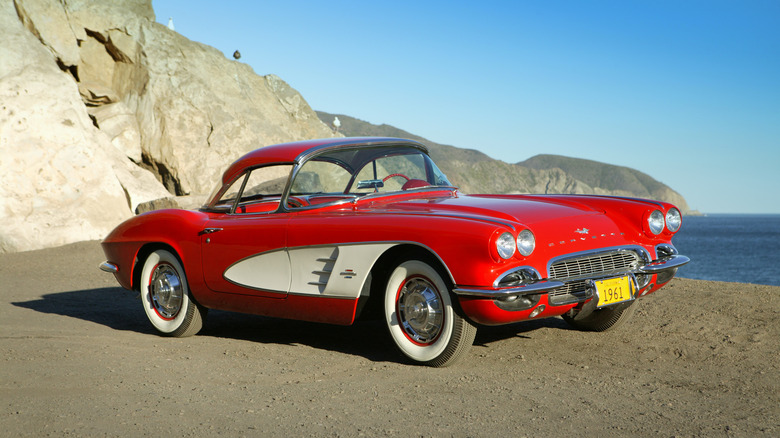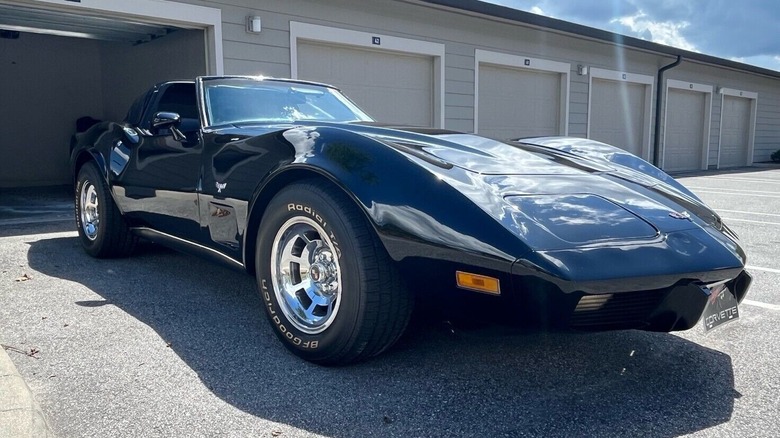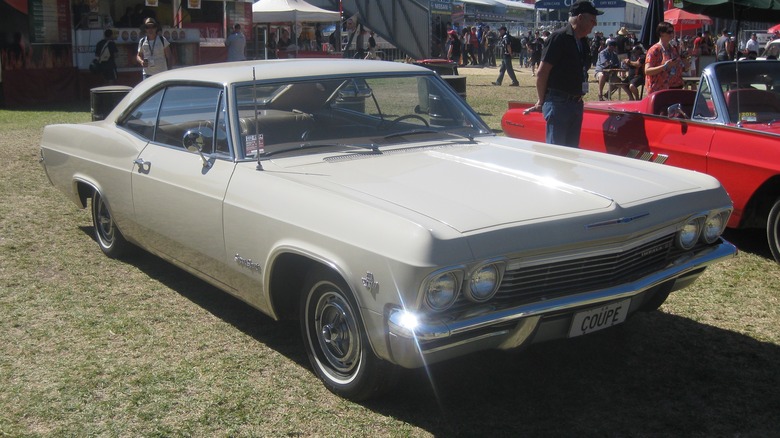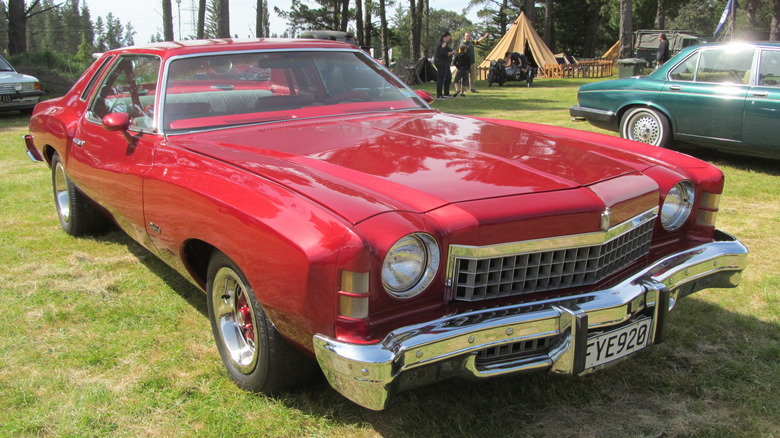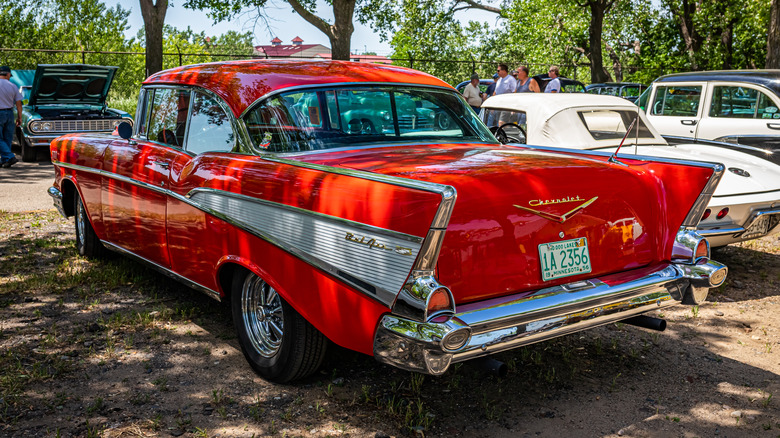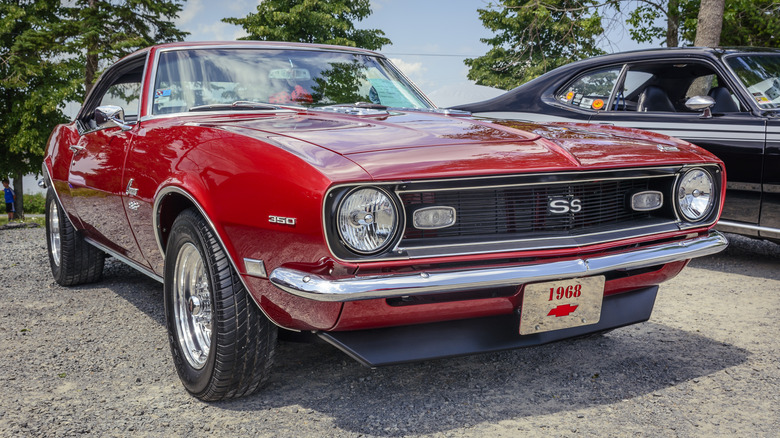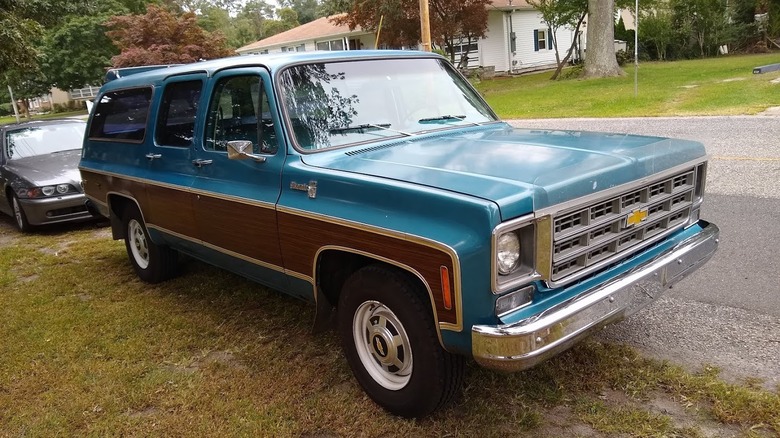6 Of The Most Popular Classic Chevrolets Ever (And What They're Worth Today)
Chevrolet got its start — and its name — when GM founder William Durant teamed up with Swiss race driver and engineer Louis Chevrolet in 1911 to form a new enterprise. They produced their first car, the Chevy C Series Classic Six, the next year. According to the MotorCities National Heritage Area, the Classic Six cost $2,150, which translates to more than $68,000 today after adjusting for inflation. That was more than twice the price of a T-4-powered Ford Model T, and it was enough to keep sales numbers modest throughout its three-year production run. Chevy is one of only five domestic auto brands to have survived since then, joining Ford, Cadillac, Buick, and GMC Trucks. In that span, Chevrolet has produced more than 200 million vehicles, according to the NWI Times.
You don't have to be an automotive enthusiast to know about the legendary Corvette, which debuted in 1953. According to Vette Vues magazine, Chevrolet has cranked out more than 1 million 'Vettes in the model's 61-year history, including the 300 produced in its inaugural vintage year and more than 50,000 for the 2023 model year. We're here to tell you exactly where that places the Corvette among Chevy's most popular classic vehicles and how much each of these models is worth today.
C3 Corvette (1968-1982)
The 2023 model is part of the eighth and most recent generation of Corvette, which we ranked second among the band of beastly brothers. In 2023, Chevy made exactly 53,785 'Vettes, which is an impressive total but places it only second among model years. The top honor goes to the 1979 Corvette, which saw a production run of 53,807 units. This year was near the tail end of the third generation, which began in 1968 and ran through 1982.
During that span, Chevrolet cranked out more than 542,000 C3 Corvettes, making this the most common version of the wedge-shaped icon. Classic.com chronicled more than 2,600 C3 sales in the past five years, with an average price of just over $34,000. The biggest bargain was a tan 1980 model that sold in 2019 for just $3,850, and the most expensive was a green 1971 convertible that sold in 2022 for $965,500 and was resold again last year for $785,000.
1965 Impala
The unquestioned winner of the single-year vehicular popularity contest is the 1965 Chevy Impala, which sold 1,046,514 units, a figure Motor Trend states is "a single-model annual sales record that still stands to this day." Chevy first used the Impala name on a 1956 concept car and made it a trim level on the Bel Air two years later. It was split off into its own full-sized model in 1959, and moved from an X-type to perimeter frame for the historic 1965 model year.
Buyers had a staggering array of engine choices that ranged from a 140 horsepower, 230 cubic-inch straight-six to 396 and 409 cubic-inch big-block V8s that put out as much as 425 horsepower (via Hemmings). That broad range of engines was a big factor in the '65 Impala's popularity when it was first released, making the car attractive to performance and economy-minded customers alike. 1965 Impalas have averaged just over $39,000 on the used marketplace in the last five years, according to Classic.com, with the cheapest ones in good condition selling for about $15,000 and a pristine red convertible selling this past January for almost $140,000.
[Featured image by GTHO via Wikimedia Commons|Cropped and scaled|CC-By 4.0]
1973-77 Monte Carlo
Chevrolet produced the Monte Carlo between 1970 and 2008, with a hiatus between 1989 and 1994. During its 32 active model years, an astonishing 4.4 million Monte Carlos left the factory, according to Motor Trend. Its peak years were during the second generation, which ran from 1973 through 1977. This was a rough period for many American carmakers, as they struggled to adapt to new emissions and collision tolerance standards along with the oil crisis.
The Monte Carlo remained a strong seller through the mid-'70s, in part due to lingering critical acclaim. Motor Trend put the Monte Carlo up against the Ford Thunderbird and Pontiac Grand Prix in November 1969 and declared it "an unqualified success in every aspect, having a lot of luxury, a lot of performance, and a lot of value." It was redesigned in 1973, but won MT's Car of the Year award and sold 233,689 units that year. Sales climbed to about 312,000 cars in 1974 before taking a one-year dip back down to about 258,000 in 1975.
The last two years for the second-generation Monte Carlo were stellar, with sales of 353,272 units in 1976 and a peak of more than 411,000 in 1977. The second-gen Monte Carlo's high production numbers make it a reasonable purchase today, with an average resale price of just under $17,000 over the past five years, according to Classic.com.
[Featured image by Riley via Wikimedia Commons|Cropped and scaled|CC-By 2.0]
1957 Bel Air
1957 was a banner year for American carmakers. Buyers could visit a dealership and pick up a first-generation 1950s Ford Thunderbird, a half-dozen luxurious Cadillac models, or a Bel Air, which in the intervening years has become known as simply the '57 Chevy. 1957 was the last year of the Bel Air's second generation, which you could get in one of seven styles: convertible, sport coupe, sport sedan, two- and four-door sedans, and two- and four-door station wagons.
The 1957 Bel Air shared its base 283 cubic-inch V8 with that year's Corvette. Both models could be purchased with Chevy's revolutionary new Ramjet fuel injection system, which upped the 283's output to as much as 283 horsepower and 290 pound-feet of torque, according to the GR Auto Gallery. The '57 Bel Air's instantly recognizable tailfins make it a staple in car museums and at auto shows more than six decades after its production, and '57 Bel Airs have appeared in hundreds of Hollywood productions. Chevy made more than 1.5 million cars in 1957, of which about 265,000 were four-door Bel Air sedans. The least common version is the two-door Nomad Wagon, which saw a production run of less than 6,300 units. Huge variations in condition and body style availability give remaining cars a wide range of resale values, but the average going price in the last five years has been just under $74,000, according to Classic.com.
1967-1969 Camaro
The 1967 Chevy Camaro had a long and prosperous run before its first cancellation in 2002. Chevy brought the Camaro back in 2010, but in 2023, Chevrolet Chevrolet announced it was saying goodbye to the sixth-gen Camaro. At the time, Chevy Global VP Scott Bell left the driver's door open for another resurrection, saying in a press release, "While we are not announcing an immediate successor today, rest assured, this is not the end of Camaro's story."
That story began as a reaction to the success of the Ford Mustang, which hit the roads in 1965 and became an instant sales sensation despite having an anemic I6 engine as standard equipment. The '67 Camaro came with a range of engines from a 140 horsepower, 230 cubic-inch straight-six to a 375 horsepower, 396 cubic-inch V8 (via Roarington). According to Car and Driver, Chevy sold between roughly 221,000 and 243,000 Camaros in each of those first three years before sales dipped below 125,000 units with the debut of the second generation in 1970.
1967-69 models are common but pricey today. According to Classic.com, nearly 2,500 have changed hands in the past five years for an average price of about $74,000. The cheapest was hardly a bargain at $13,200, and a rare racing-spec 1969 COPO model sold in 2020 for more than $1 million.
1973-1991 Suburban
When Chevy rolled out the Suburban in 1935, the SUV was a relatively new concept for most American consumers, but the model has survived for nearly 90 years, making it the longest-running nameplate in American automotive history. The great-grandpa of American SUVs is now in its 12th generation and sold about 53,000 units in 2023, according to Good Car Bad Car. In our ranking of all 12 generations of the Chevrolet Suburban, the 1973-1991 seventh-generation placed fifth, based largely on its longer wheelbase and family-friendly upgrades. Fuel injection appeared later in the seventh-generation Suburban, as did a four-speed automatic transmission.
It yielded to the eighth-gen model just before the SUV boom hit hard, but the 1973-1991 Suburban helped change the minds of American car buyers about the practicality of an SUV as a primary vehicle. The average going rate for a used seventh-generation Suburban over the past five years sits at about $18,500, although a handful have gone for under $5,000 and one blinged-out 1979 specimen sold last year for $101,200, according to Classic.com.
[Featured image by Dave732 via Wikimedia Commons|Cropped and scaled|CC-By 4.0]
